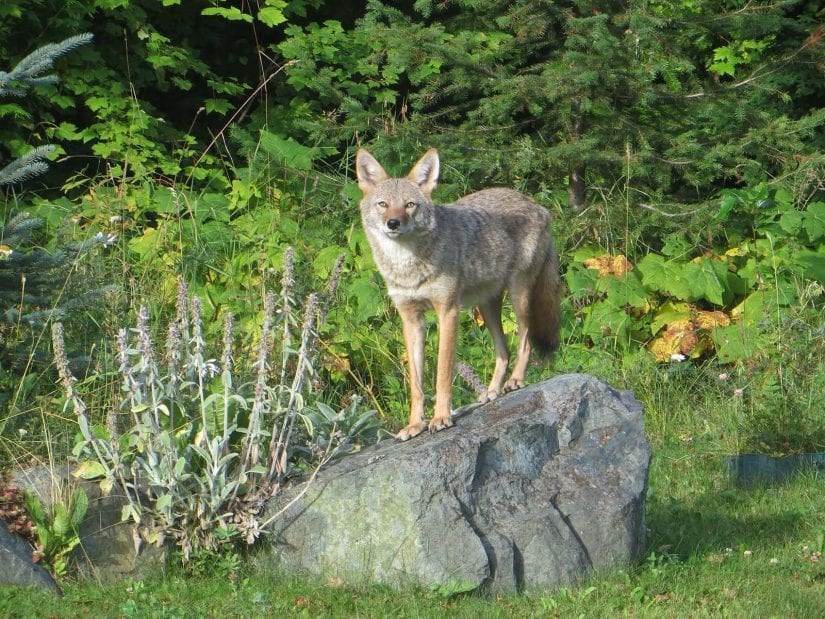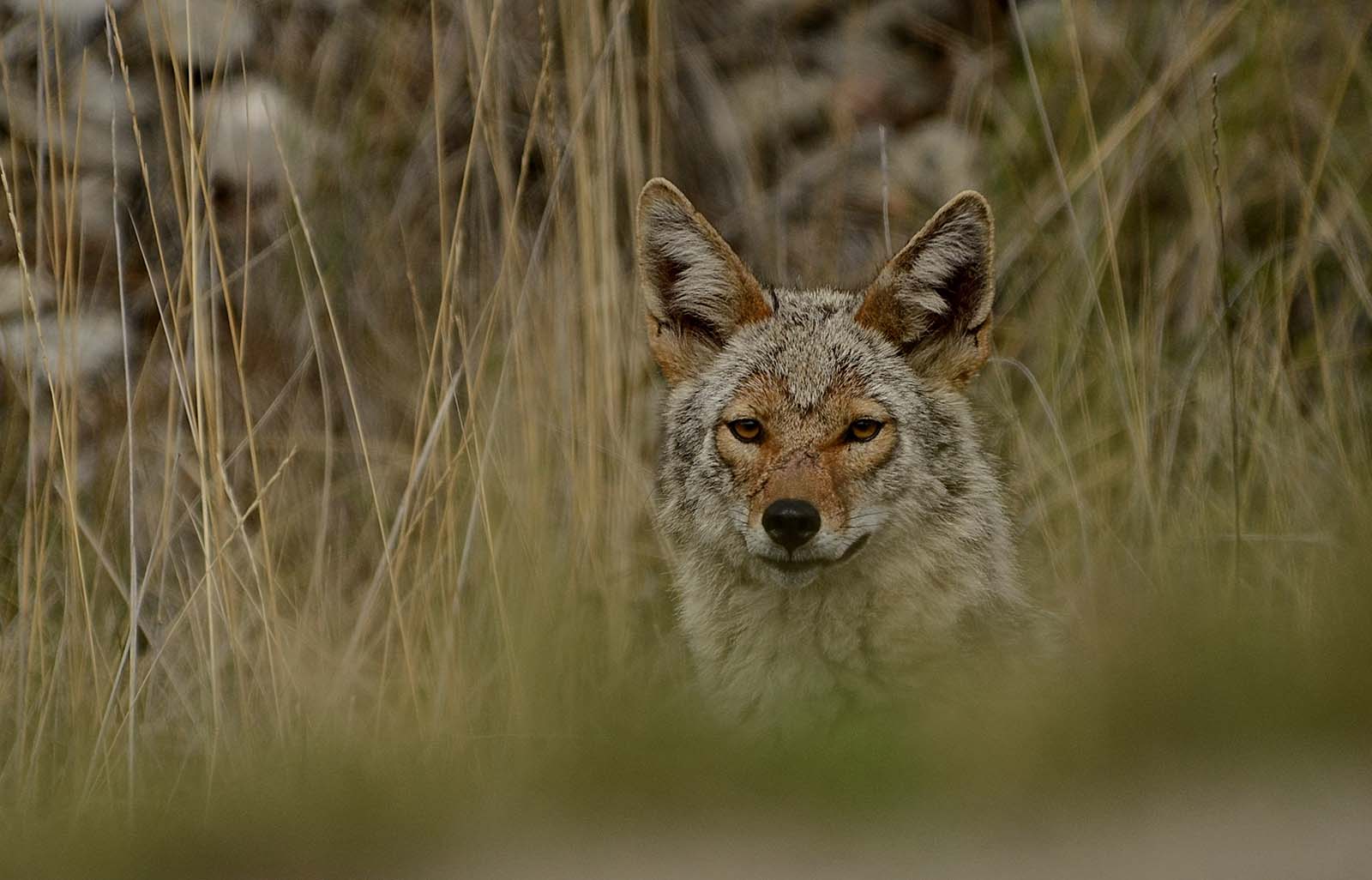Coyotes can be found throughout most of B.C., and it is common to spot them in rural, suburban and even urban settings. Coyote sightings in the city are normal, even during the day. It can be surprising and sometimes unnerving to see them. Still, like many wild animals, coyotes are generally not interested in engaging with humans – and it is important to keep it this way. You can help prevent conflicts by respecting their space and being a responsible pet guardian.
Just like our pet dogs, coyotes are smart, playful and social. But their role in the ecosystem as scavengers and rodent predators can present dangers for cats and small dogs if they are left outdoors unsupervised, especially during the spring and summer when coyotes are mating and raising pups. Keep your cats and dogs safe from coyotes by learning how to prevent problems and what to do if you see a coyote.

What to do if a coyote approaches you
- Make yourself big and loud. Wave your arms in the air, wave a stick, stomp your feet and yell, “Go away!”
- Pick up small children and pets and do not let them chase coyotes and other wildlife.
- Do not run away. Maintain eye contact, make yourself big and loud and slowly move away.
- Report aggressive or threatening coyote encounters by calling the Conservation Officer Service at 1-877-952-7277.
Prevent problems with coyotes
Here are some simple things we can do to avoid conflict with coyotes, and to ensure they don’t lose their natural wariness of humans:
- Never feed a coyote. If a coyote grows accustomed to being fed by humans, they will lose their fear of people, which can lead to unwanted conflicts and aggression.
- Manage rodent attractants like seed from bird feeders and fallen fruit so coyotes are not drawn to your property; voles, mice, rats and squirrels make up the majority of a coyote’s diet.
- Keep garbage cans and compost bins clean and secured. In addition to preying on rodents, coyotes are scavengers who will take advantage of any available food sources.
- Keep your dog on a leash when out walking and never let your dog interact with, or chase a coyote.
- Be extra vigilant in areas coyotes frequent – near golf courses, the edges of parks with overgrown vegetation or fields with tall grasses.
- Keep cats indoors and monitor pets and small children outside.
- Protect farm animals. Use fencing at least two metres high, ensure cages are well-built and ideally contain animals indoors at night.
- Spay and neuter your pets. Coyotes are attracted to and can mate with unspayed or unneutered dogs. Unspayed female dogs in heat will attract male coyotes and unneutered dogs may be lured away by the scent of a female coyote in heat.
Learn more
Coyotes are adaptable, social and intelligent animals and an important part of our ecosystem. Learn more about them and how to maintain a safe environment for humans and coyotes.


